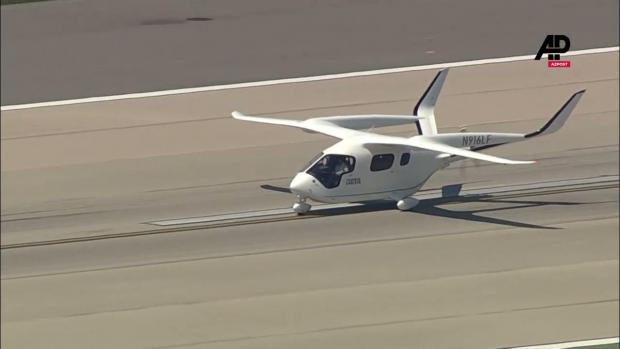
Breaking News
 Trump Administration Furthering Control Grid
Trump Administration Furthering Control Grid
 Living in a World of Ongoing Shortages
Living in a World of Ongoing Shortages
 The Gaza Crisis and the Repeal of Christianity's Personhood Revolution
The Gaza Crisis and the Repeal of Christianity's Personhood Revolution
 RED ALERT: Doctors Sound the Alarm After Fibrous Clots Discovered in Young Children Born...
RED ALERT: Doctors Sound the Alarm After Fibrous Clots Discovered in Young Children Born...
Top Tech News
 Hydrogen Gas Blend Will Reduce Power Plant's Emissions by 75% - as it Helps Power 6 States
Hydrogen Gas Blend Will Reduce Power Plant's Emissions by 75% - as it Helps Power 6 States
 The Rise & Fall of Dome Houses: Buckminster Fuller's Geodesic Domes & Dymaxion
The Rise & Fall of Dome Houses: Buckminster Fuller's Geodesic Domes & Dymaxion
 New AI data centers will use the same electricity as 2 million homes
New AI data centers will use the same electricity as 2 million homes
 Is All of This Self-Monitoring Making Us Paranoid?
Is All of This Self-Monitoring Making Us Paranoid?
 Cavorite X7 makes history with first fan-in-wing transition flight
Cavorite X7 makes history with first fan-in-wing transition flight
 Laser-powered fusion experiment more than doubles its power output
Laser-powered fusion experiment more than doubles its power output
 Watch: Jetson's One Aircraft Just Competed in the First eVTOL Race
Watch: Jetson's One Aircraft Just Competed in the First eVTOL Race
 Cab-less truck glider leaps autonomously between road and rail
Cab-less truck glider leaps autonomously between road and rail
 Can Tesla DOJO Chips Pass Nvidia GPUs?
Can Tesla DOJO Chips Pass Nvidia GPUs?
 Iron-fortified lumber could be a greener alternative to steel beams
Iron-fortified lumber could be a greener alternative to steel beams
First passenger flight for electric CTOL aircraft lands at JFK

The Port Authority of New York and New Jersey is looking to significantly cut its carbon footprint. In fact, it's aiming for net-zero carbon emissions by 2050. To help the Authority meet these goals, a couple of years back officials put out a call for proposals from innovators to "demonstrate their next-generation aircraft at a Port Authority airport."
Part of that project brief involves weighing up the feasibility of advanced air mobility solutions to cut emissions. One of those proposals came from BETA Technologies, which has been designing, prototyping and testing its electric aircraft for a number of years. And now, one of its birds has taken to the air with passengers on board.
The ALIA CX300 used for this demonstration is essentially a conventional take-off and landing (CTOL) version of BETA's A250 electric vertical take-off and landing (eVTOL) aircraft that we first covered back in 2020.
The culmination of six years of R&D and testing, each aircraft is designed to transport up to five passengers plus a pilot on short hops between airports – though the eVTOL can also include vertiports in its air mobility mix. The CTOL variant has a single five-blade prop to the rear, which is powered by a H500A electric motor and flies with enough battery juice for more than 300 nautical miles per one-hour recharge, according to the spec sheet.
The first passenger flight took off from the runway at East Hampton Airport with a pilot in one of the two seats up front and four passengers strapped in behind. Among those who got a taste of the future were Matt Koscal (president of Republic Airways) and Rob Wiesenthal (CEO of Blade Air Mobility). The aircraft stayed aloft for 45 minutes, before descending and landing at JFK.
"This electric aircraft flight from Long Island to New York City highlights that quiet and emission-free flight is quickly becoming a reality, benefiting Blade's fliers, local residents, and other key stakeholders," said Wiesenthal. "I can think of no better way to demonstrate our company's commitment to quiet, electric aircraft commercialization than my participation on this flight as a passenger."



